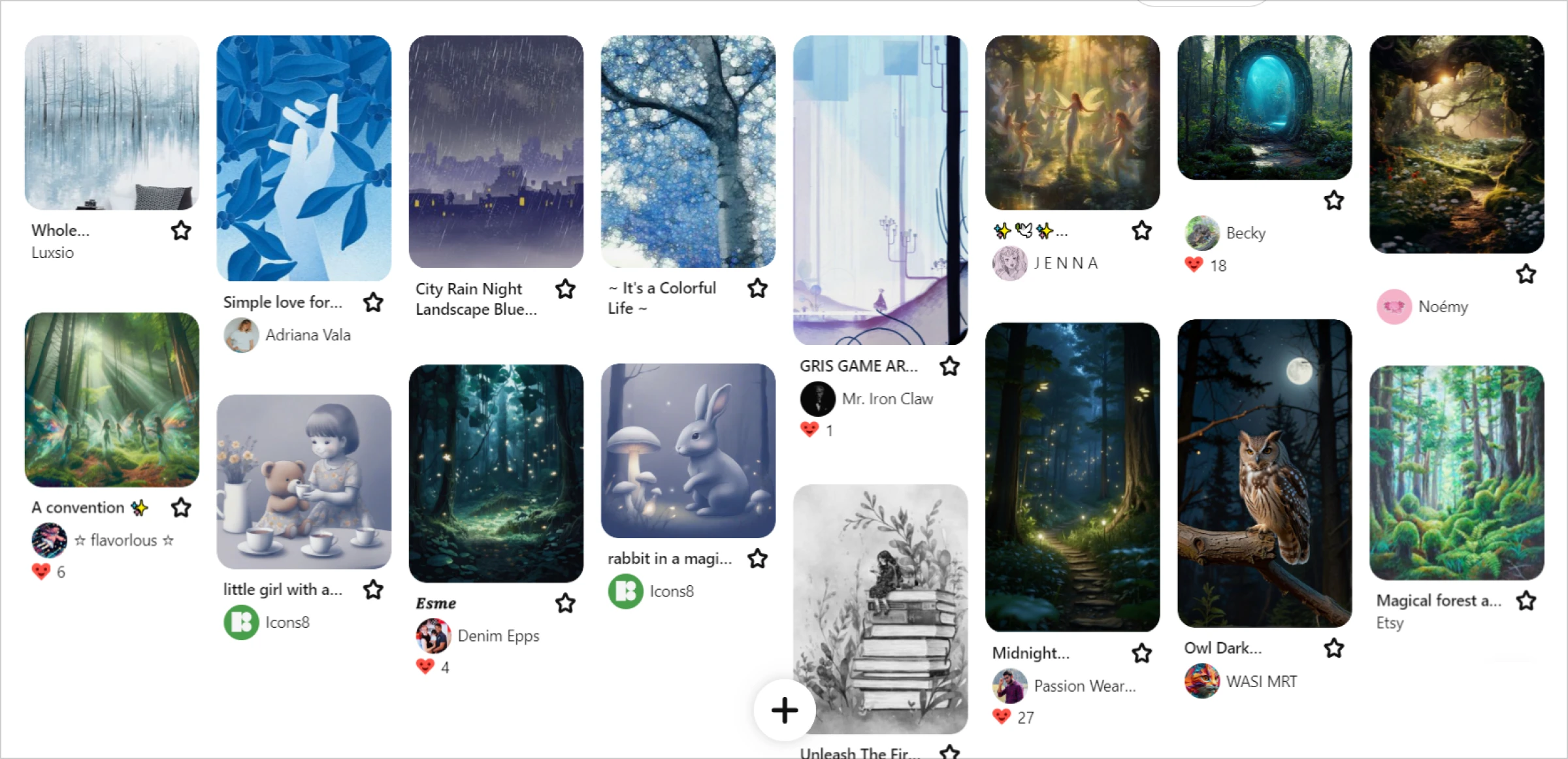Creating illustrations for a children’s book is challenging, especially if you’re not an artist. Learn how to use AI to create stunning illustrations.
This guide will show you how to easily overcome the main challenges and create a children’s book illustration using Illustration Generator. We’ll demonstrate this with our fairytale, “Ella in the Enchanted World.”
Step 1. Define your vision of the story
Let’s take “Ella in the Enchanted World” as our example. This fairytale follows a little girl named Ella who embarks on a magical journey, meeting various whimsical characters along the way. Here’s how to conceptualize this story.
Understanding the core message and theme
“Ella in the Enchanted World” is more than just a tale of adventure. It’s a story about courage, friendship, and discovering the magic within oneself. Ella’s journey is filled with enchanting landscapes and diverse characters that help her learn valuable life lessons. Knowing this core message helps in setting the tone for your illustrations.
Building the narrative arc
Outline the main plot points of “Ella in the Enchanted World”:
- Introduction. Ella is introduced to her ordinary world, feeling curious and adventurous.
- The call to adventure. Ella discovers a magical book in the library that leads her to the Enchanted World.
- Meeting characters. Ella meets various characters, such as a talking rabbit, a wise old owl, and a mischievous fairy.
- Challenges and growth. Ella faces challenges that test her bravery and wit, learning important lessons.
- Climax. Ella confronts a significant obstacle or antagonist in the Enchanted World.
- Resolution. Ella overcomes the challenge and returns home with newfound confidence and wisdom.
By breaking down the narrative, you can visualize the key moments that must be illustrated, ensuring each illustration captures the essence of these pivotal scenes.
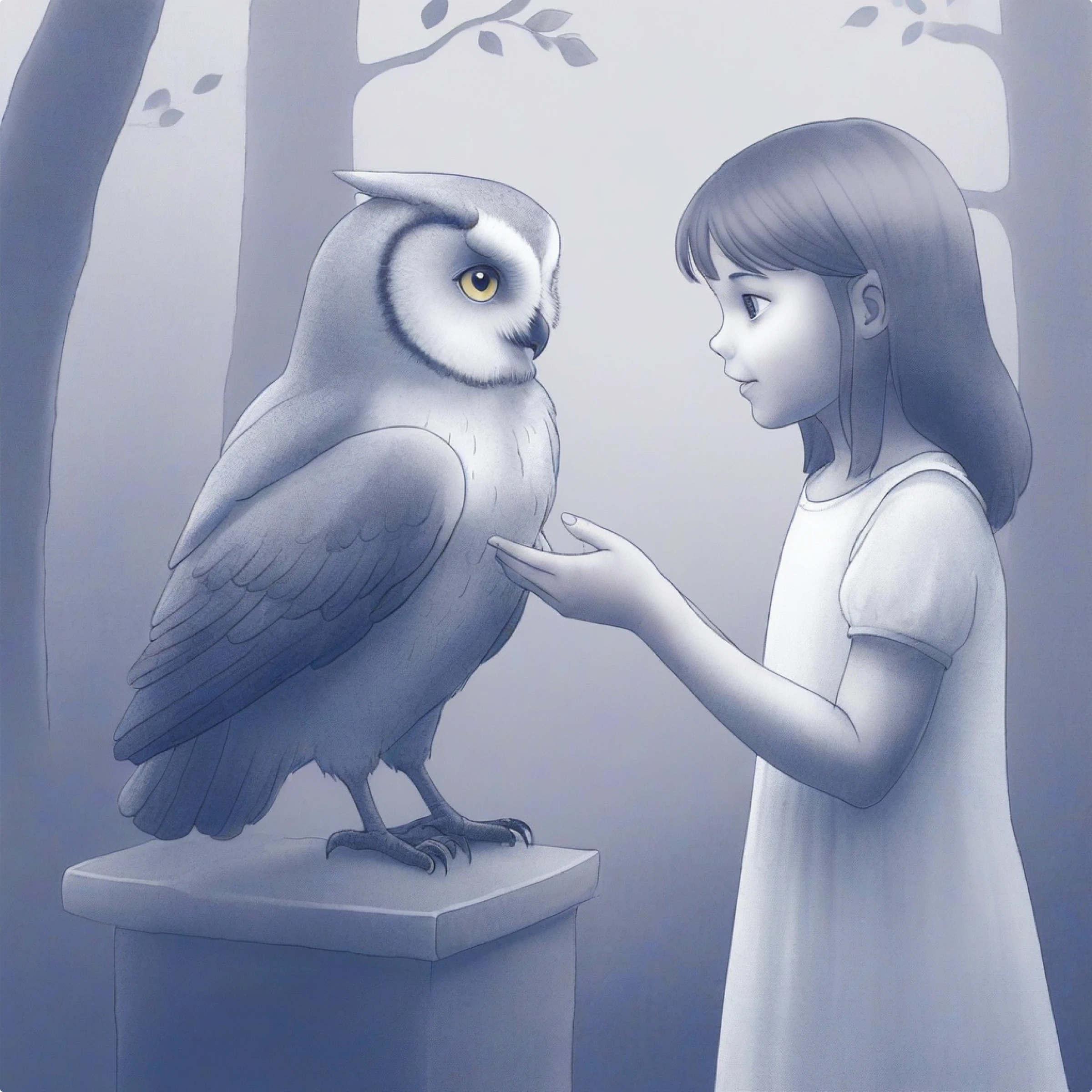
Defining the characters
Each character Ella meets in the Enchanted World should be distinct and memorable. Start by detailing their traits and roles in the story:
- Ella. A curious and brave little girl with a heart full of wonder.
- Wise Owl. A mentor figure who provides Ella with wisdom and guidance. The first character she encounters.
- Talking Rabbit. Ella’s friend in the Enchanted World. Playful and guides her through challenges.
- Mischievous Fairies. Adds humor and helps Ella learn to trust her instincts.
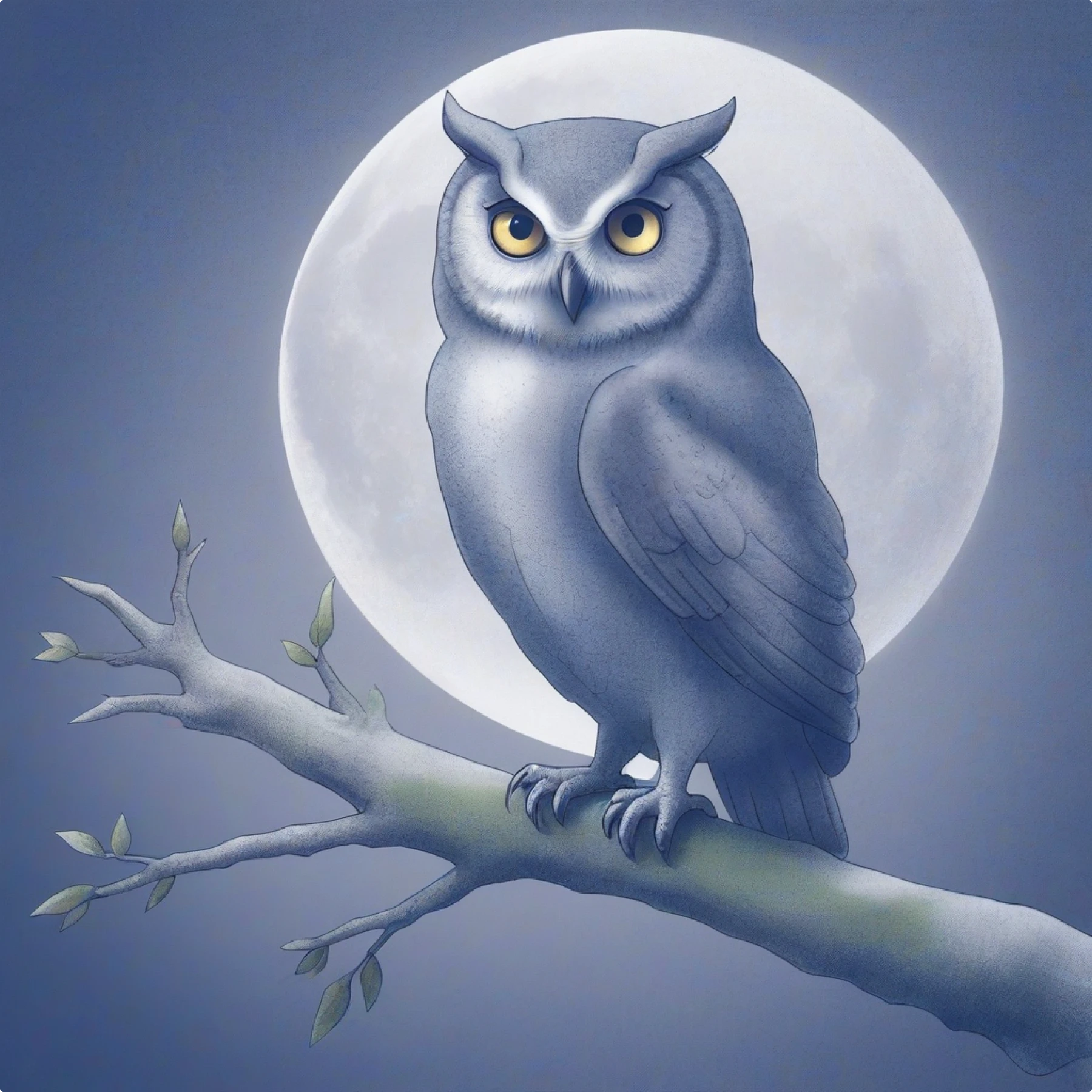
Setting the scene
The Enchanted World is a place of wonder and magic. Visualize its key locations:
- Ella’s home library. A sparkling gateway that leads Ella to the Enchanted World.
- Enchanted forest. Filled with glowing flowers, towering trees, and mystical creatures.
- Owl’s ancient library. A serene place with tall bookshelves and floating candles where Ella learns valuable lessons.
- Fairy glade. A whimsical, colorful meadow where fairies play and create mischief.
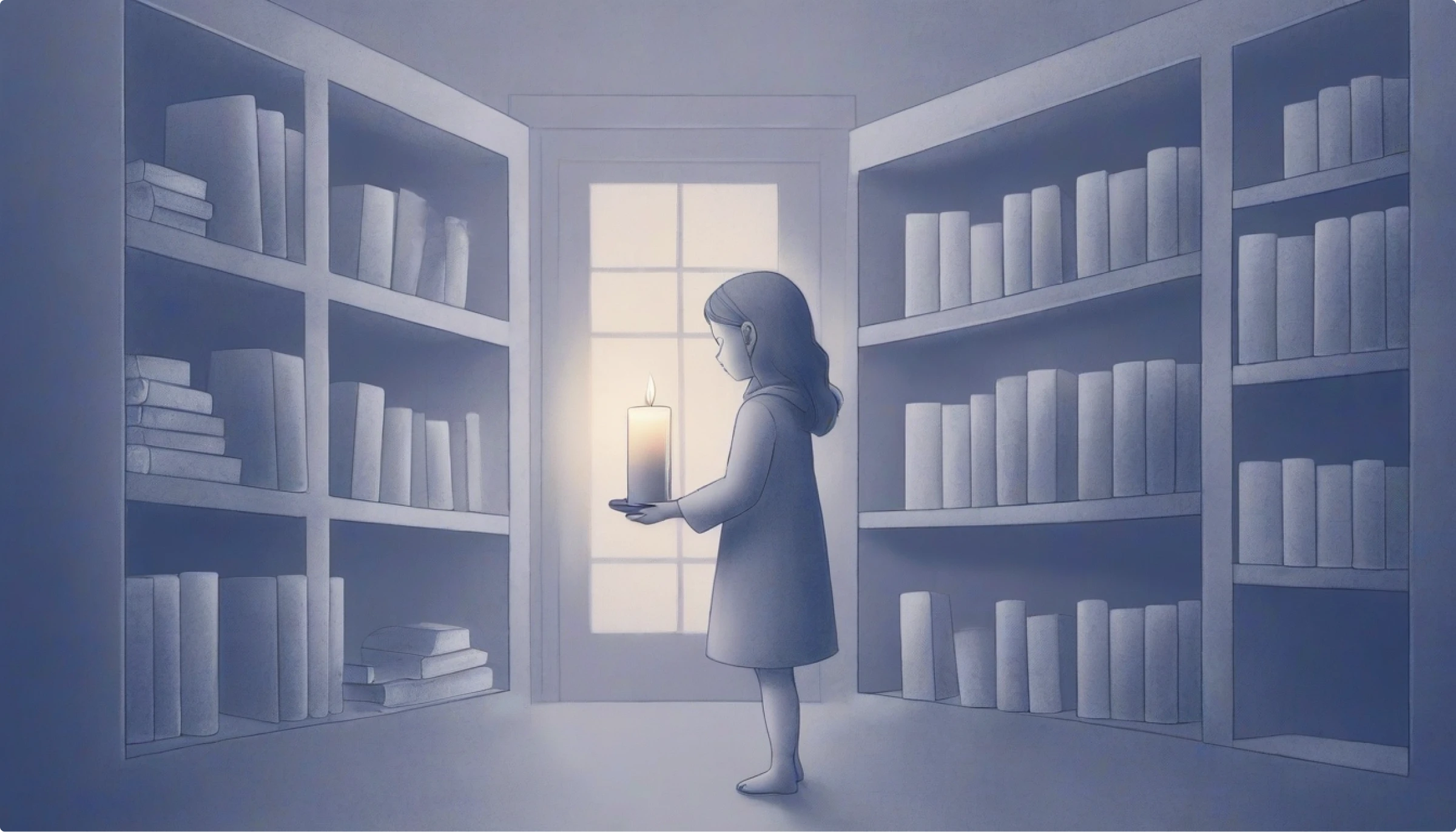
Step 2. Create a mood board
Creating a mood board is essential in visualizing the overall style and tone of the story. A mood board helps consolidate your ideas and provides a visual reference that ensures consistency throughout the illustration process. For our book, we’ve chosen a whimsical, dreamy style.
Key elements for the mood board
- Artistic style. We’ve chosen a soft, ethereal style with gentle shading and a serene color palette, as seen in the attached unicorn illustration. This style suits the fairytale theme, providing a magical and inviting feel.
- Color palette. Our color palette will focus on soft pastels and gentle hues to evoke a sense of wonder and tranquility. Think light blues, gentle pinks, and soft greens, complemented by occasional splashes of brighter colors for emphasis.
- Mood and tone. The overall mood should be whimsical and enchanting, with a touch of mystery. Each illustration should invite readers into the magical world, making them feel like they’re part of Ella’s adventure.
- Additional inspirations. Include a variety of visual inspirations that match the chosen style. These can be snippets from other fairytale illustrations, classic children’s book art elements, or scenes from animated movies that capture the essence of a magical journey.
Assembling the mood board
Use tools like Pinterest, Mega Creator, or a physical board to compile your inspirations. Arrange them in a way that clearly communicates your story’s visual and thematic elements.
Here’s the mood board for our story. The blues and greys are for the color inspo. Just the way they create a subtle, whimsical, and calm atmosphere.
Creating a comprehensive mood board provides a clear visual direction for your AI-generated illustrations. It ensures that each image aligns with your vision and enhances the storytelling of “Ella in the Enchanted World.”
Step 3. Sketch initial concepts
Even if you’re not an artist, sketching rough ideas of your characters and scenes can be incredibly helpful. These sketches don’t need to be detailed. They just serve as a visual reference for when you start using AI tools. Focus on:
- Character design. Outline the basic shapes and features of your characters. Consider their age, personality, and role in the story.
- Scene layouts. Draft simple layouts of key scenes. Consider the placement of characters, background elements, and focal points.
Define artistic style
Decide on the artistic style that suits your story. Children’s books can range from highly detailed illustrations to simple, stylized drawings. Consider the age group of your target audience:
- For younger children. Simplified, colorful, and highly expressive illustrations work well.
- For older children. More detailed, nuanced, and realistic art might be appropriate.
Get feedback
Gathering feedback is essential to ensure your illustrations resonate with your audience and align with your story’s vision. Here’s how to effectively seek and use feedback:
- Share ideas. Present your illustrations to authors and editors for feedback.
- Adjust based on feedback. Use responses to choose the best style for your book illustrations.
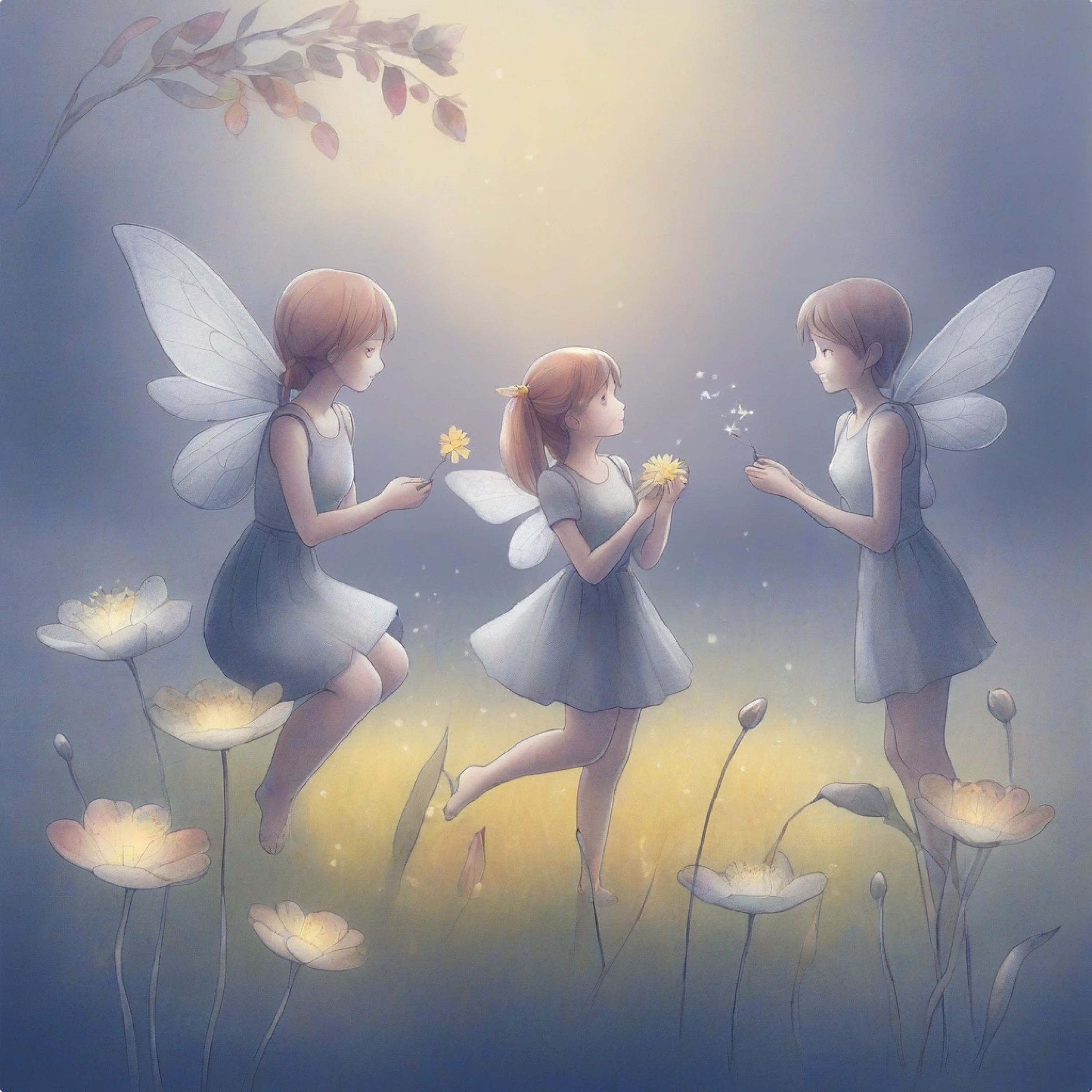
Step 4. Generate illustrations
With sketches and vision ready, it’s time to use the Illustration Generator to bring “Ella in the Enchanted World” to life. Let’s create an enchanted forest for this story.
Go to Illustration Generator.
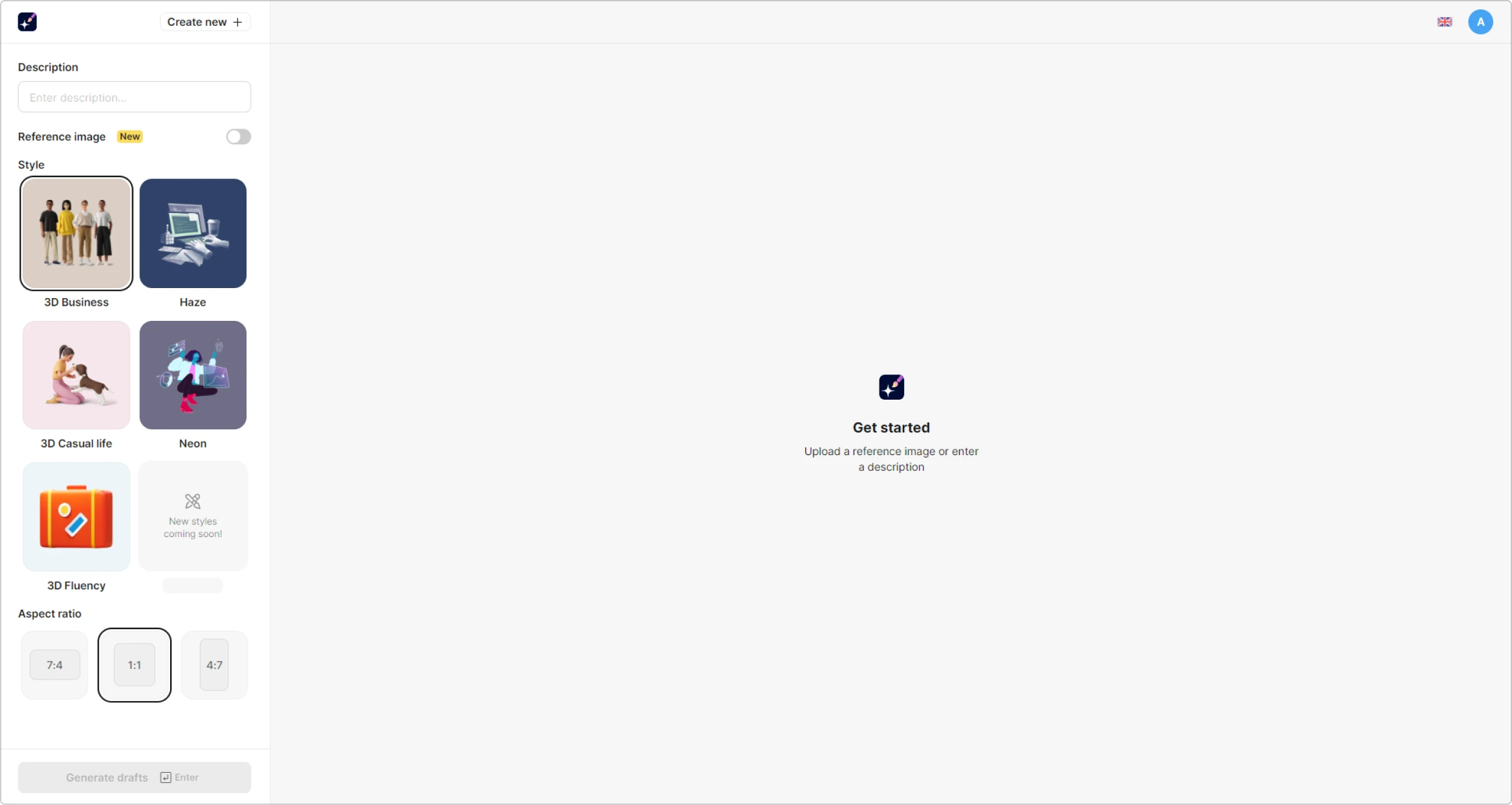
We started with this prompt: “Enchanted forest filled with glowing flowers, towering trees, and mystical creatures.” The Haze style perfectly matches this story, and the blue/grey color scheme is perfect.
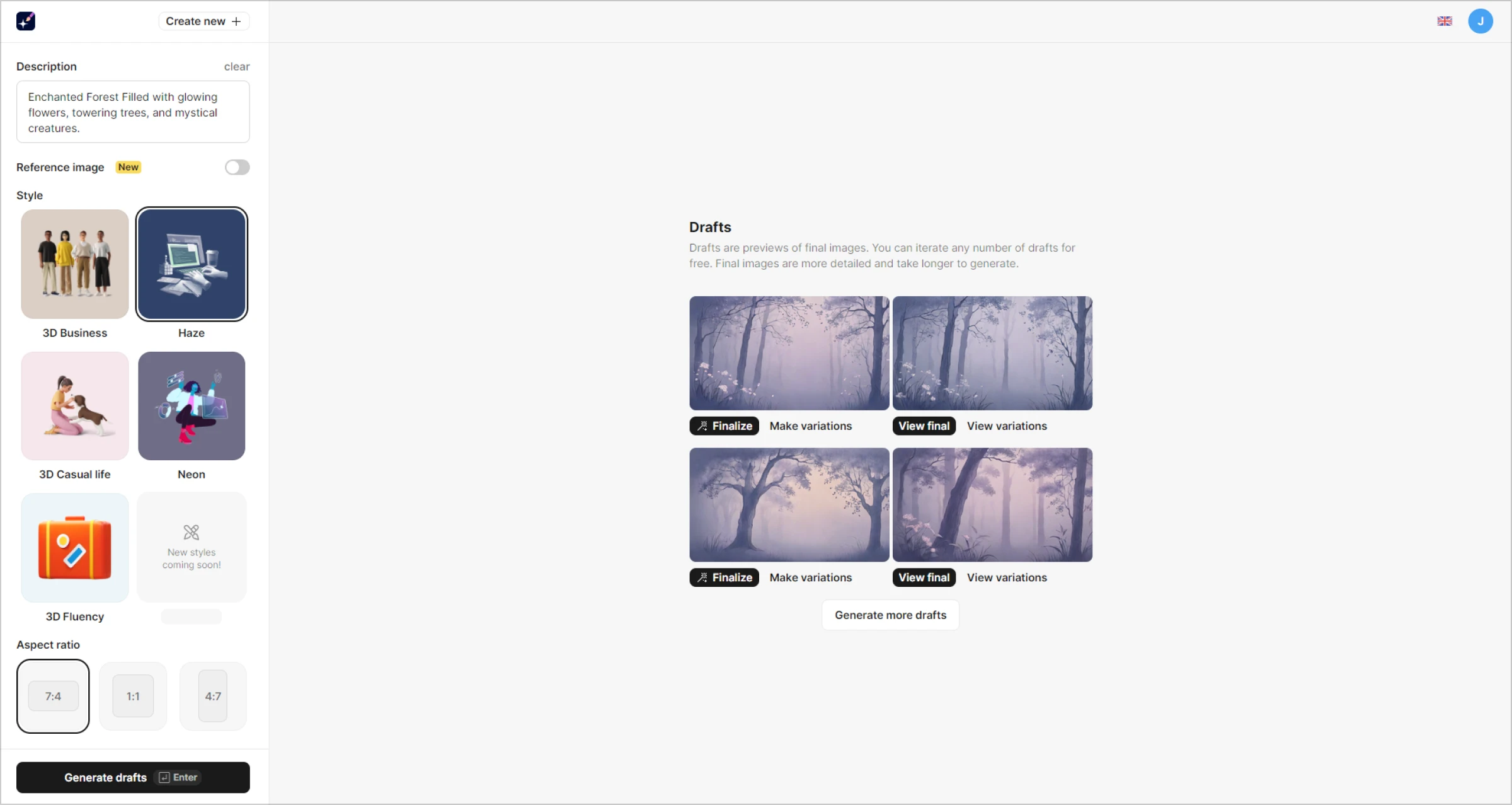
The first drafts are great already, but I want to add more “bling” to the results. The “Generate more drafts” feature works magic. The second one looks promising.
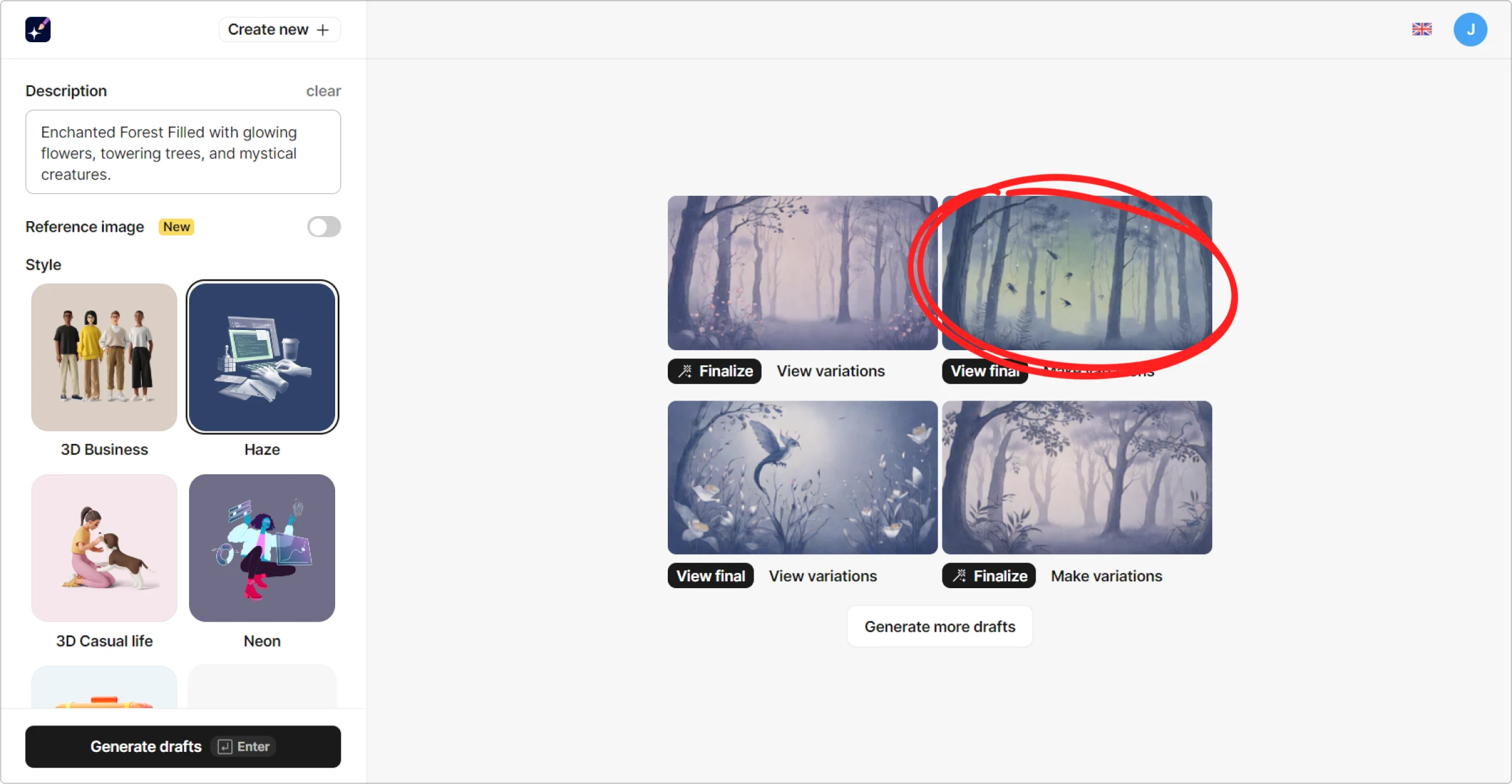
Here’s the final draft, which fits our story perfectly as a part of an enchanted forest.
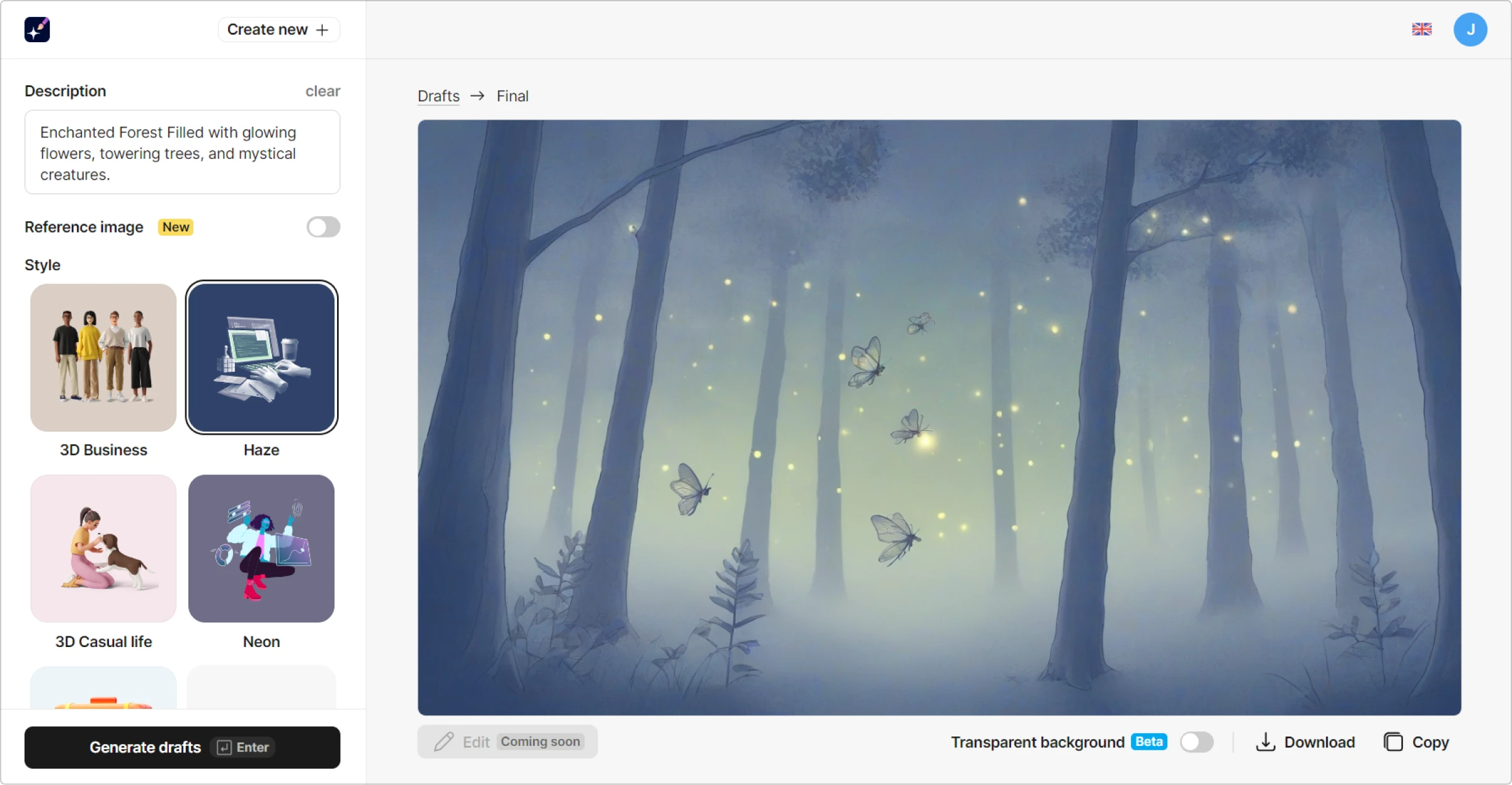
This illustration captures the Enchanted Forest, where glowing flowers, towering trees, and mystical creatures bring the scene to life, immersing her in a world of wonder.
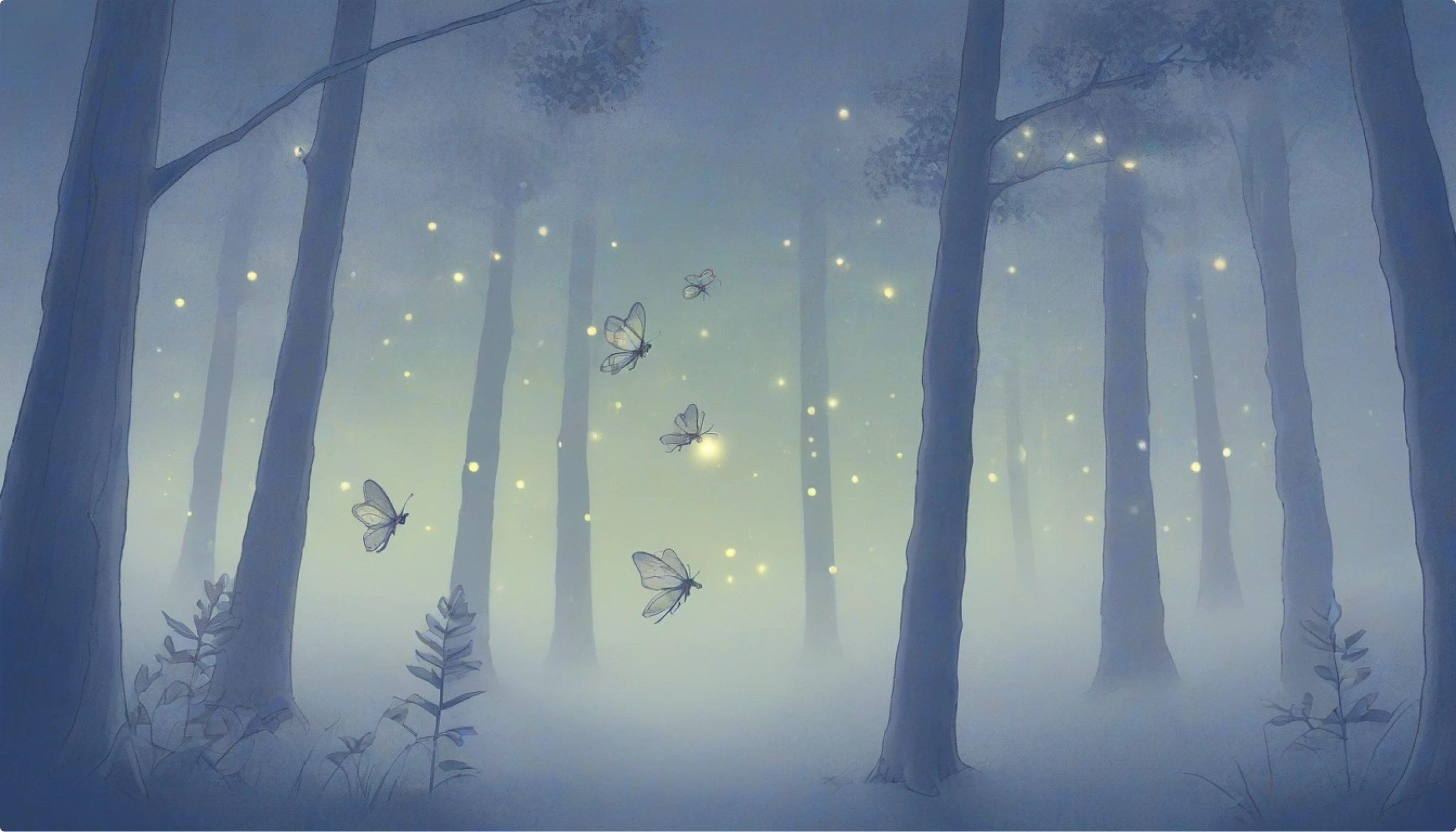
Wrapping up
Creating illustrations for a children’s book like “Ella in the Enchanted World” can be a delightful and fulfilling process, especially with the help of AI tools. By defining your vision, creating a mood board, sketching initial concepts, and generating detailed prompts, you set a strong foundation for producing high-quality illustrations. The Illustration Generator allows you to bring your story to life with vibrant and consistent imagery.
Learn print design tricks to make your book cover a total success.
Here are more results for your inspiration.
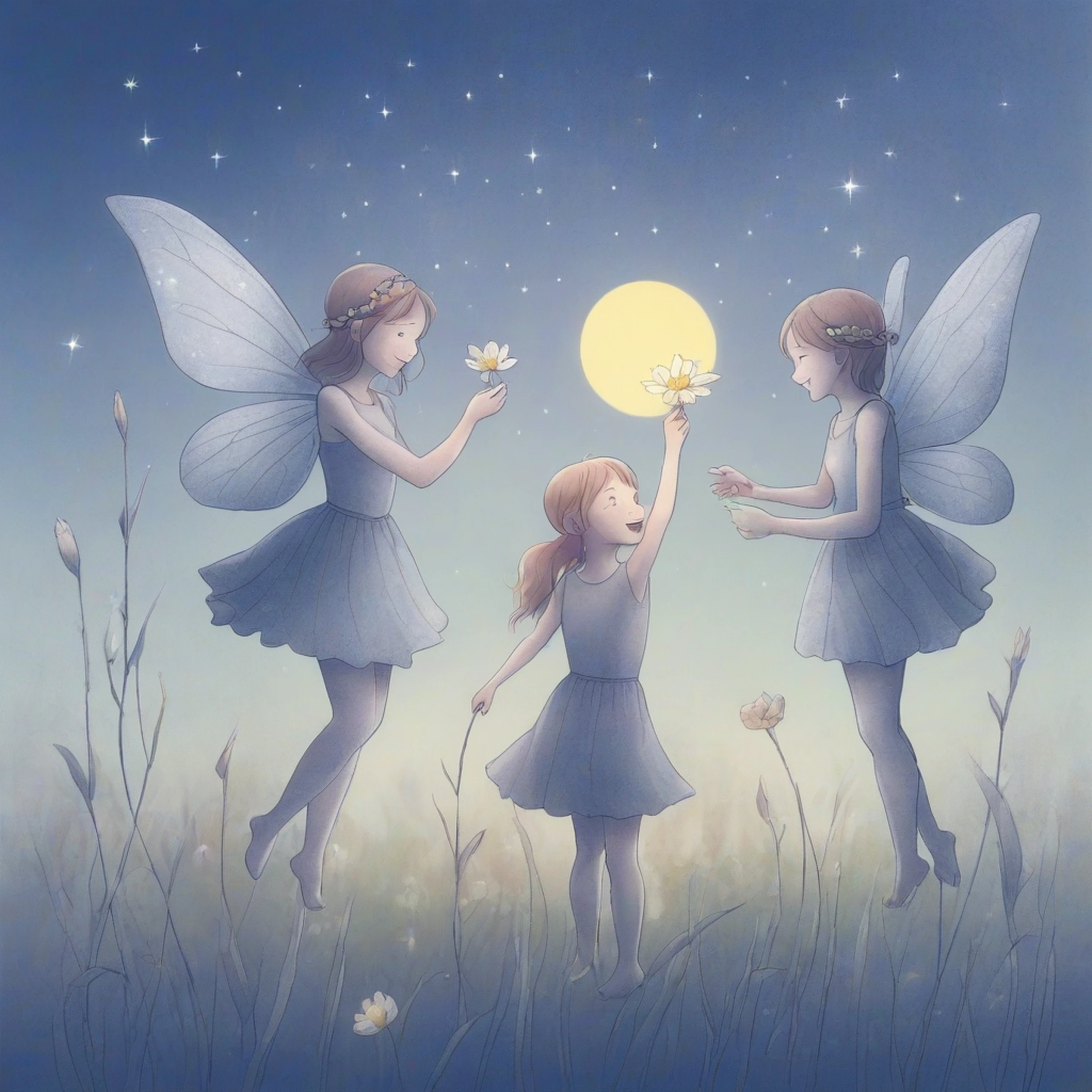
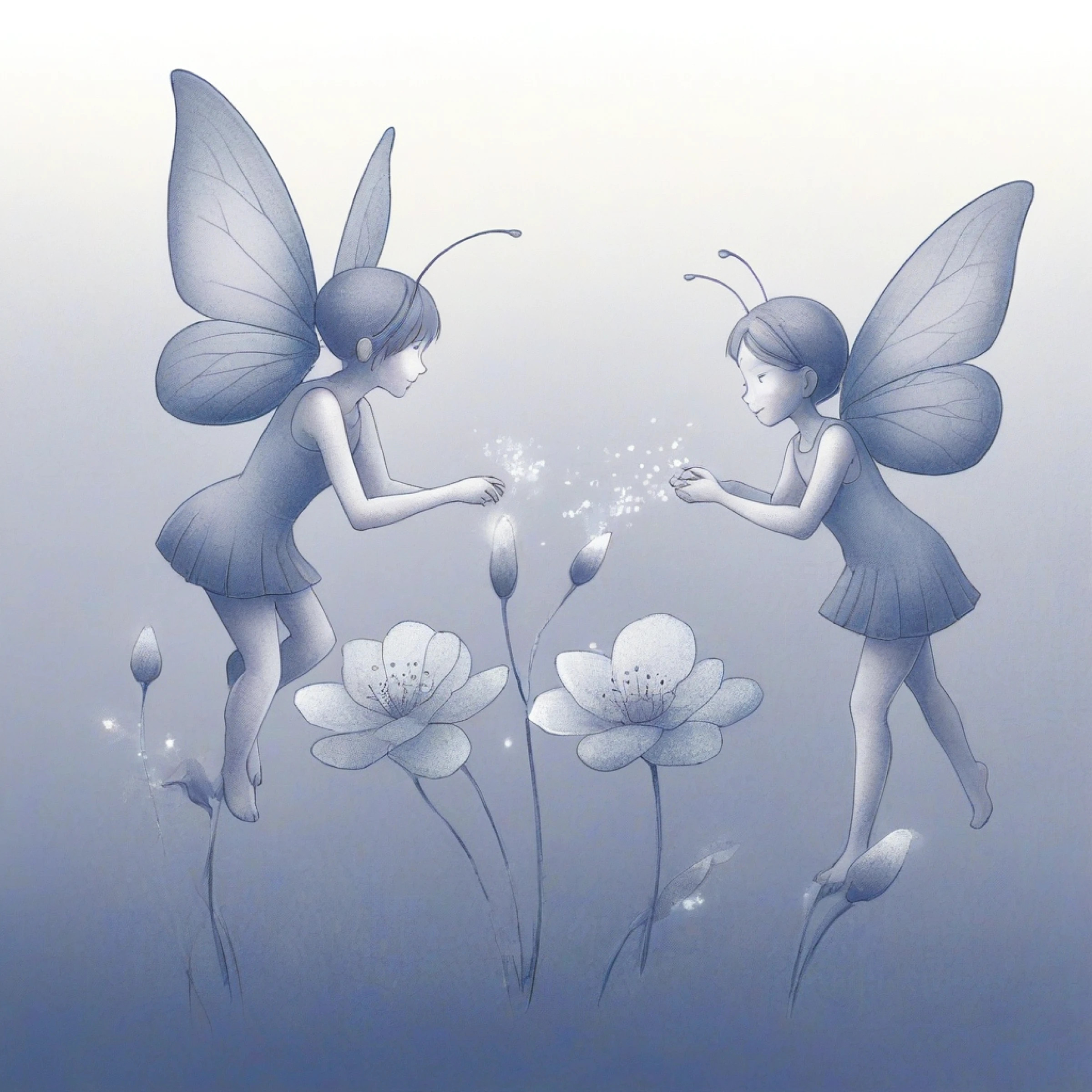
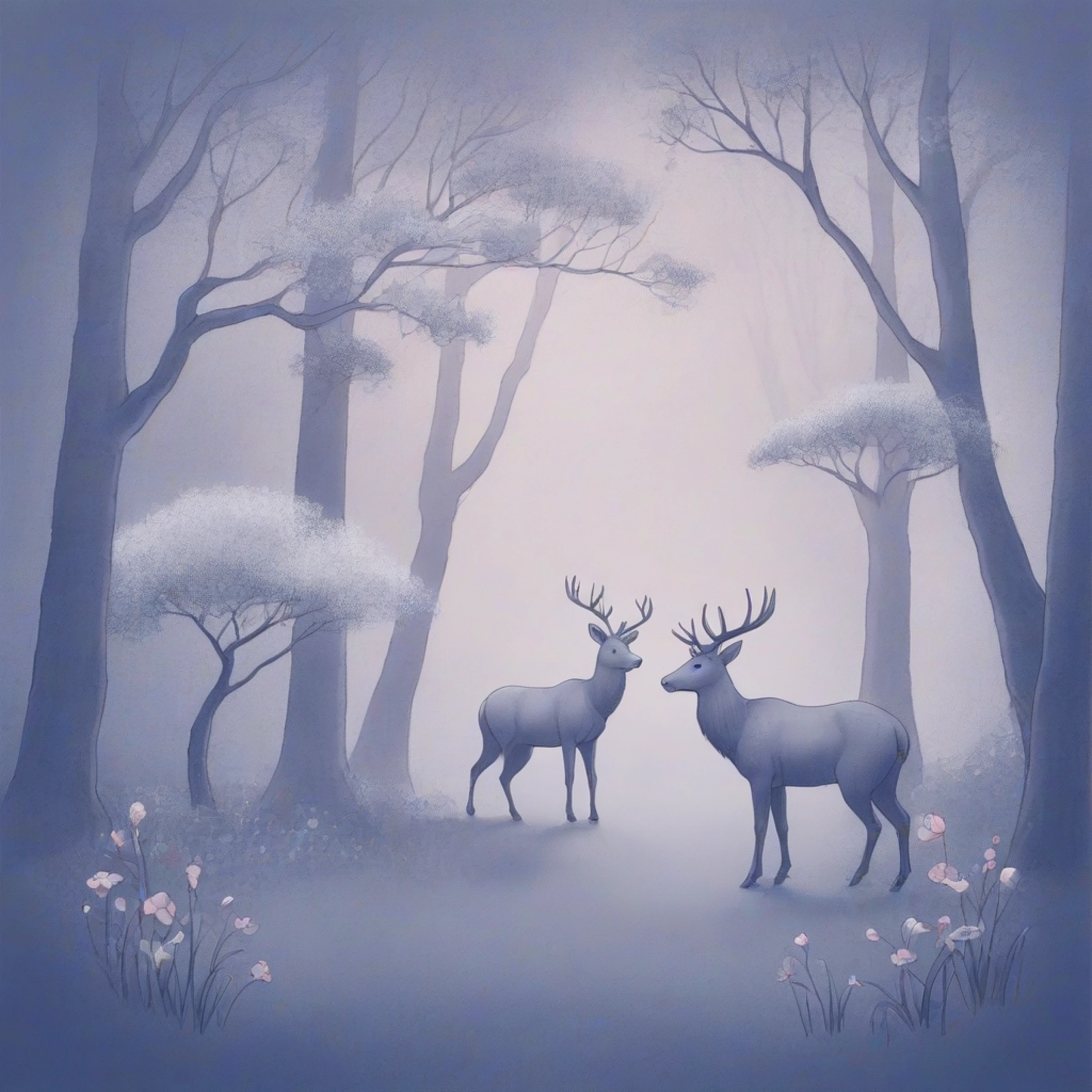
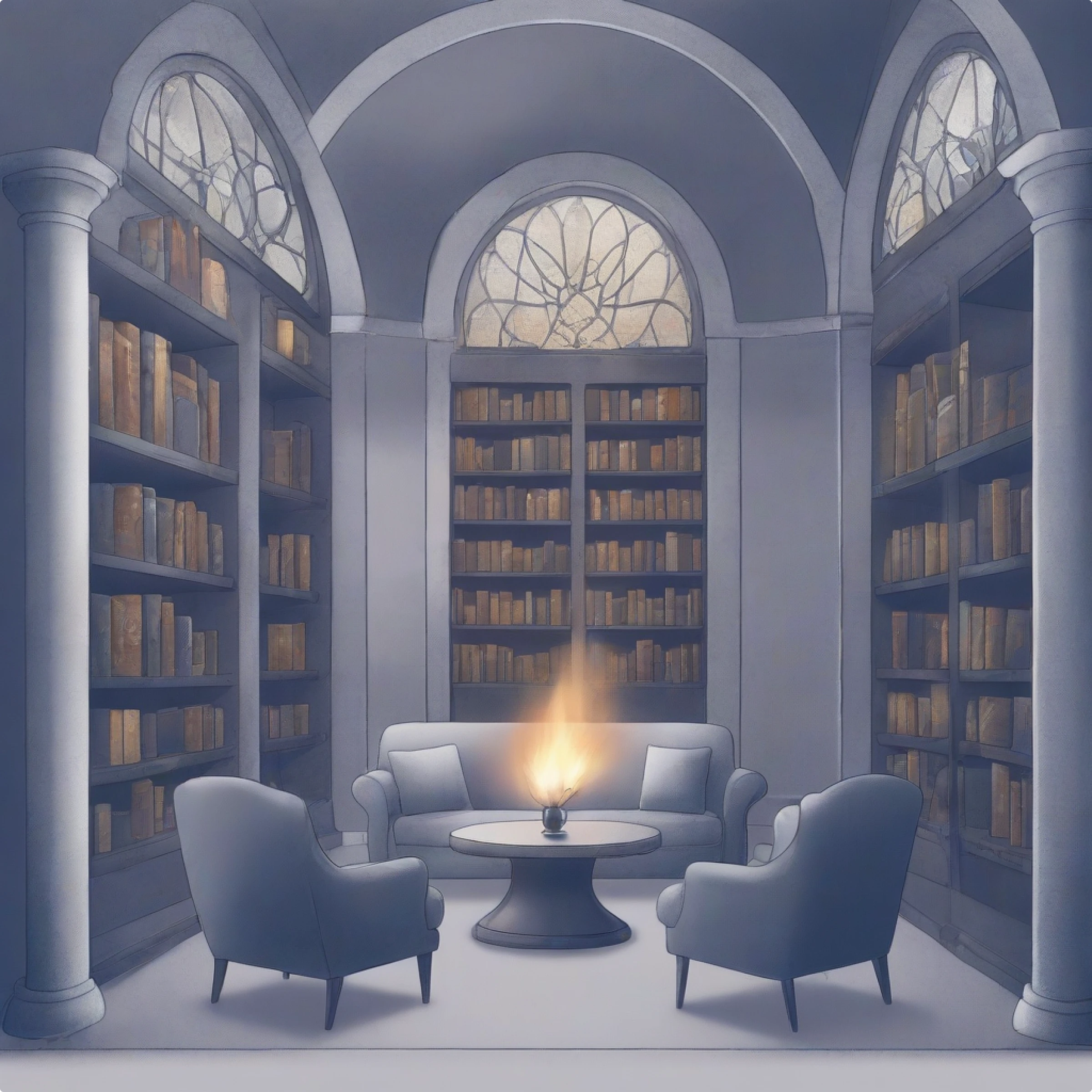
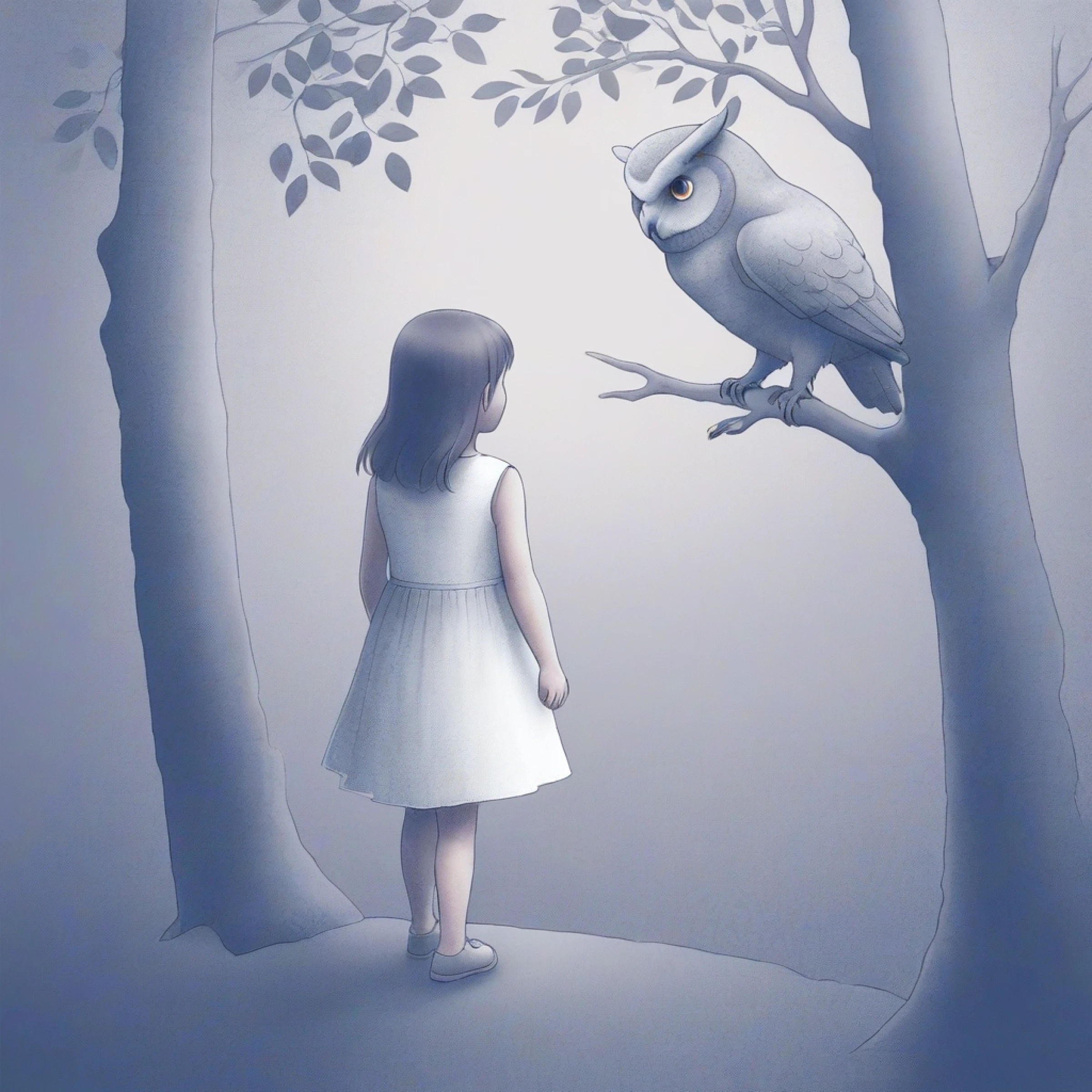
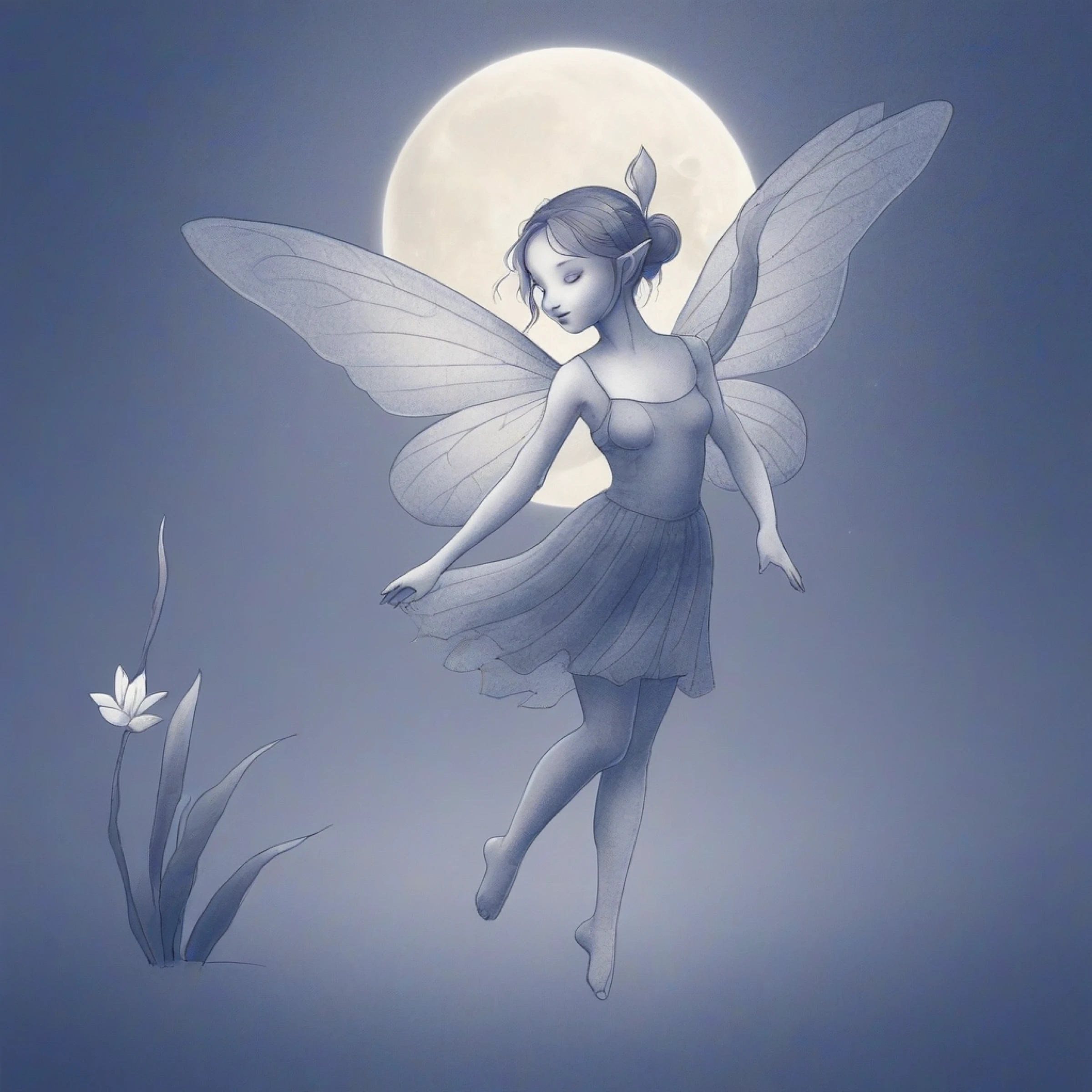
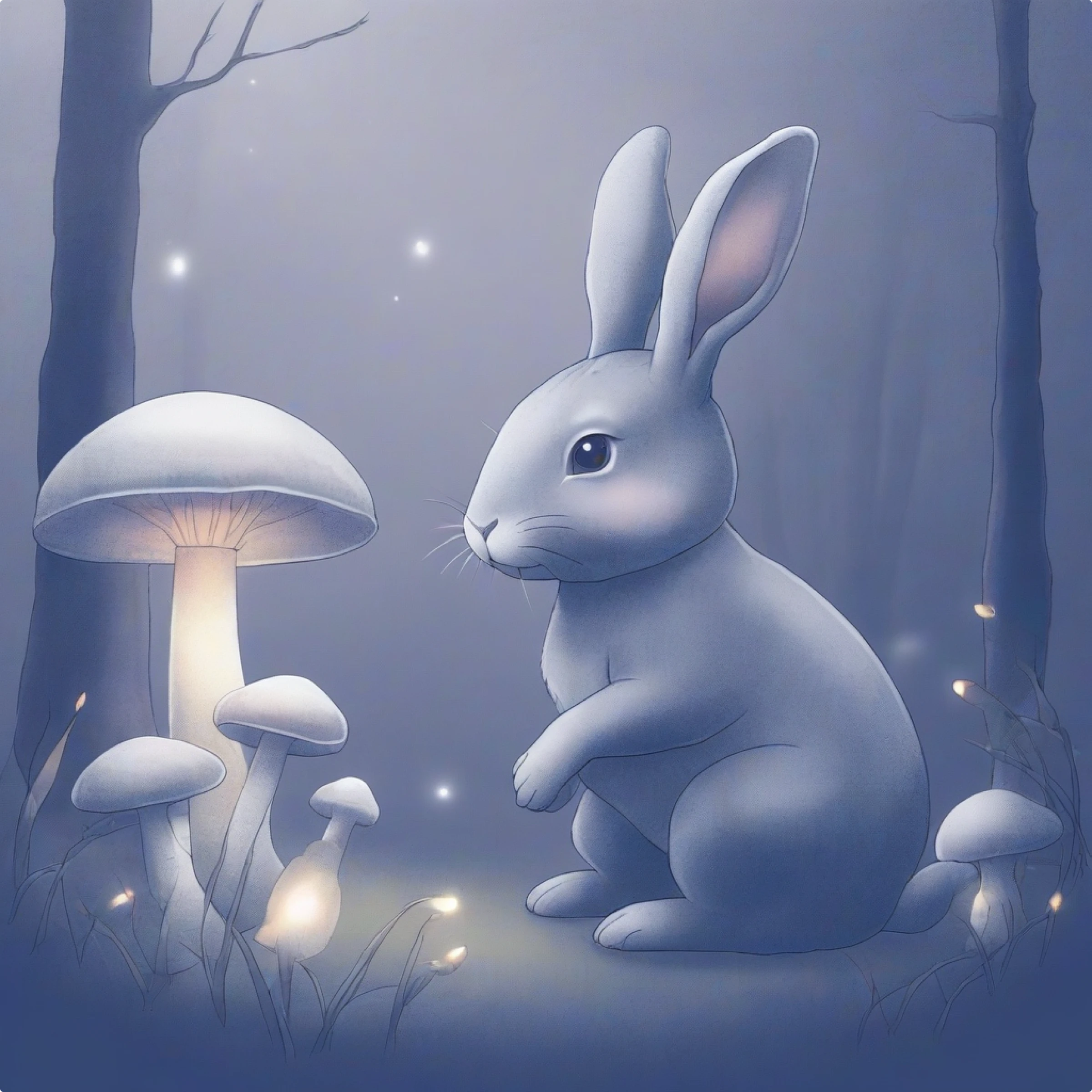
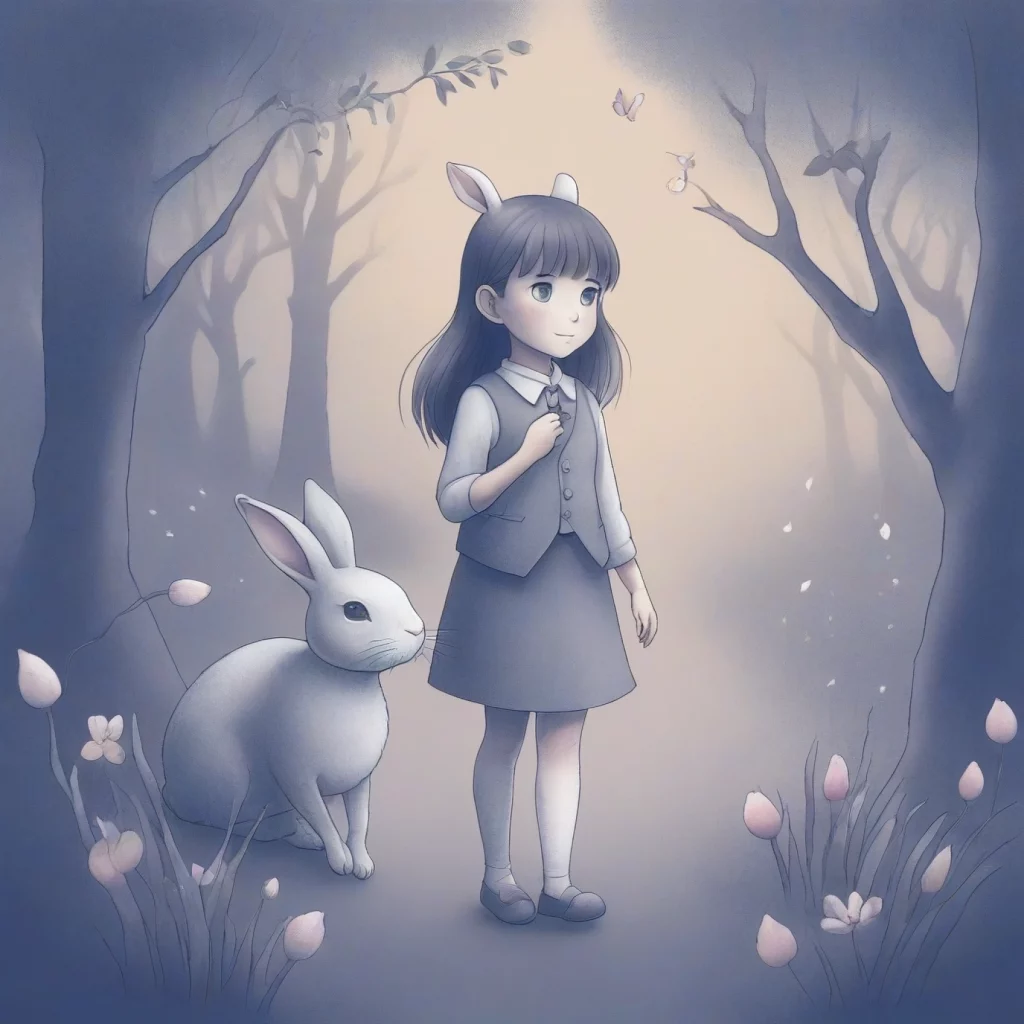

About the author
Adeline Knight is a content writer at Icons8. She started as a professional photographer before falling for design. She enjoys experimenting with new tools and uncovering tips and tricks to simplify her life and boost her creativity.
